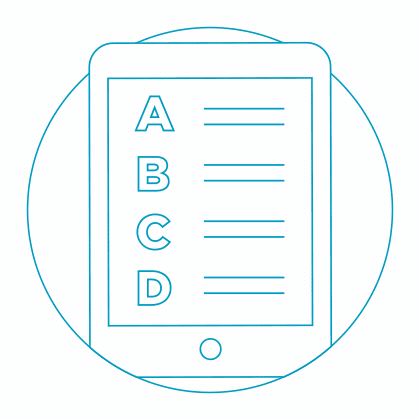REASONING - Online Test
Examine the following statements:
- Only those who have a pair of binoculars can become the members of the birdwatcher’s club.
- Some members of the birdwatcher’s club have cameras.
- Those members who have cameras can take part in photo-contests.
Which of the following conclusions can be drawn from the above statements?
Count the number of triangles and squares in the given figure.

The figure may be labelled as shown.

Triangles :
The, simplest triangles are ABI, BGI, GHI, HAI, BCJ, CFJ, FGJ, GBJ, CDK, DEK, EFK and FCK i.e. 12 in number.
The triangles composed of two components each are ABG, BGH, GHA, HAB, BCF, CFG, FGB, GBC, CDE, DEF, EFC and FGD i.e. 12 in number.
The triangles composed of four components each are AGC, BFD, HBF and GCE i.e.4 in number.
Thus, there are 12 + 12 + 4 = 28 triangles in the given figure.
Squares :
The squares composed of two components each are BJGI and CKFJ i.e. 2 in number.
The squares composed of four components each are ABGH, BCFG and CDEF i.e. 3 in number.
Total number of squares in the figure = 2 + 3 = 5.

Examine the following statements:
- Rama scored more than Rani
- Rani scored less than Ratna
- Ratna scored more than Rama
- Padma scored more than Rama but less than Ratna.
Who scored the highest?
Count the number of parallelogram in the given figure.

The figure may be labelled as shown.

The simplest ||gms are ABFE, BCGF, CDHG, EFJI, FGKJ and GHLK. These are 6 in number.
The parallelograms composed of two components each are ACGE, BDHF, EGKI, FHLJ, ABJI, BCKJ and CDLK. Thus, there are 7 such parallelograms.
The parallelograms composed of three components each are ADHE and EHLI i.e. 2 in number.
The parallelograms composed of four components each are ACKI and BDLJ i.e. 2 in number
There is only one parallelogram composed of six components, namely ADLI.
Thus, there are 6 + 7 + 2 + 2 + 1 = 18 parallelograms in the figure.

